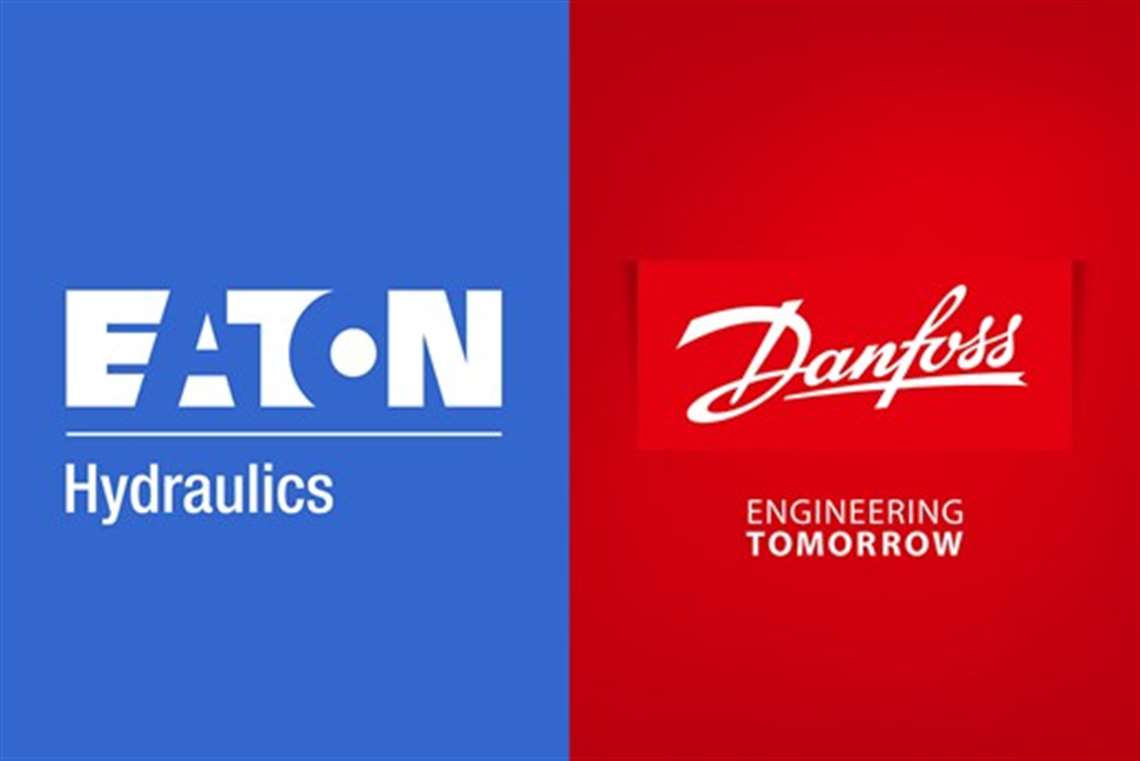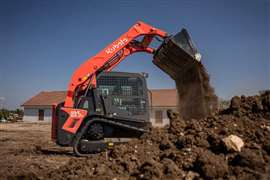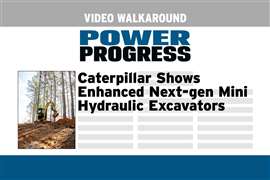More On Danfoss’ Acquisition of Eaton Hydraulics.
24 February 2020

A Big Deal
No matter how you define it, the recent announcement of Danfoss’ plan to buy most of Eaton’s hydraulics businesses is a big deal.
It’s a big deal financially; $3.3 billion, cash. There have not been a lot of multi-billion dollar acquisitions in the off-highway markets recently.
It’s a big deal corporately, as it moves Danfoss from $7 billion to over $10 billion in annual revenue. It is a big deal strategically as Danfoss, for the first time, gets into the industrial (non-mobile) hydraulic markets.
It doubles the company’s overall hydraulics business. And it’s a big deal in terms of global footprint as Danfoss adds new manufacturing plants and eventually will add approximately 11,000 employees to its 28,000 people workforce.
It is not a done deal yet, as the acquisition has to pass the usual array of regulatory approvals. Assuming all the required hurdles are passed, Danfoss estimates the acquisition will close by the end of this year.
Specifically, Danfoss is acquiring 86% of Eaton’s Hydraulic business, with Filtration and ironically its Golf Grip business (which reported into the Hydraulics segment) staying with Eaton.
Craig Arnold, Eaton’s chairman and CEO said the deal was done as, “part of the ongoing transformation of Eaton into a higher growth company with better earnings consistency.”
The Danfoss Side
From the Danfoss side, Eric Alström, president of Danfoss Power Solutions, where the Eaton hydraulics business will reside, said that while things started heating up last year, Eaton Hydraulics had been on their minds for a while.
“We’ve always had our eyes on Eaton and had admiration and respect for the company. Of course we also wanted to win when competing
with them,” Alström said. “But over the last couple of years, I asked my team to start studying them a little bit more closely. It’s good to know your competition, but also because we thought maybe this could be a company that might be a good fit for us.”
And apparently the closer Danfoss looked at Eaton, the more they liked what they saw. “Eaton has an abundance of really strong brands in the market and they’re seen as a very strong and premium player in most of what they do. So the more we studied, the more excited we got,” Alström said.
Alström was quick to make a key point.
“I think it’s important for people to know that this is a growth story. This is not a saving-ourselves-to-profitability story. Eaton is a very well-managed company, very professionally run for many years, with a really great management team and employees.
“The opportunity in this transaction lies in that we can strengthen our sales teams, so that we can better service our customers,” he said. “We’re adding engineering resources. We get talented engineers, all of which we can focus on growing our businesses faster and together.”
Alström said that while it is still too early in the process to make a definitive branding statement, he did say that it was clear that the Eaton Hydraulics brand would become Danfoss. However, he added, there were a number of brands, such as Aeroquip, Vickers, Char-Lynn and others that are strong brand names. “We think those brands are assets to the company and would be very careful to dispose of strong brands. So at this point we of course haven’t made any decisions. This will be done together with our colleagues from Eaton when the time is right

and not before the transaction has closed.” he said.
Industrial Hydraulics
The addition of Eaton also moves Danfoss into the industrial hydraulics world where they had not been a player before. Was this part of a strategic goal that Danfoss had set for itself, to become a full-line hydraulic manufacturer?
“No,” Alström said. “When I first came to Danfoss these topics were taboo. We held true to what we did in off-highway-only. But over time, as we’ve become more of an applications expert and a system supplier, we also recognized that this (industrial) really would make great sense for us because we are doing basically everything now except cylinders. So this would really make sense.”
In any merger or acquisition the product fit between the companies involved is one of the first things people look at. Again, Danfoss liked what it saw.
“First of all,” Alström said, “we are quite complimentary. There is some overlap, but nothing that makes us nervous or is a showstopper by any means. I think customers will see us as a much better partner than the individual companies were before, and we will be able to service our customers in a better way.”
Specifically Alström mentioned Eaton’s larger industrial clutches, valves, piston pumps and motors and gerotor products. Plus it brings a range of fluid conveyance products, hoses and fittings, to the Danfoss portfolio, something the company did not offer previously.
“There are just a number of products that are very exciting to us and quite complimentary. Plus, in terms of which applications we serve, there are some new applications from both company’s perspective,” he said.
“By the way, it’s also a very attractive opportunity for other segments in Danfoss that can benefit from this great distribution network,” Alström said. “Danfoss Drives for one, as well as hybrid applications for that matter. Danfoss Silicon Power for example is doing the power modules for electric vehicles, collaborating with our Danfoss Editron unit. Both can benefit from what Eaton brings to us.”
Not Electrification This Time
Given that electrification has been a major initiative for Danfoss Power Solutions in recent years, Alström offered a unique perspective on how that fits with this acquisition.
“Eaton as a group obviously focuses on electrification, but that was not what attracted us in this deal and frankly is not part of the deal either,” he said. “This is the hydraulics business and the reason we are so excited about this is because we know, power and energy density are heading in the right direction.
“When that day does come, and electrification becomes a real alternative, we will be well-prepared, where we can ensure that we are substituting ourselves. We will fill our factories maybe with not orbital motors, but electric motors. So we will be well prepared for when that eventually happens in the off-highway market.”
Geography, distribution and manufacturing footprints also seem to be a good match. “We’ll now be in an even better position to service global customers, but also regional customers, as well as smaller customers. Plus,” Alström said, “ we both have very strong and well-developed distribution networks that we see as a tremendous asset because that’s how we can really service and support those smaller OEMs.”
In terms of geography, Alström said, “although we are both global players, there are some countries where Eaton hydraulics has a presence from a manufacturing standpoint, but we do not.” He listed Mexico, Korea and Japan, as well as fluid conveyance manufacturing plants in Turkey. “So there are some new and exciting locations for us. And that’s also an asset that in this. We’ve just become even more globally present then we were before.”
The regulatory question, given many of the uncertainties in the world today, is another question that always pops up.
“We will have to file in various jurisdictions. Expectations are that we can close the transaction no later than the end of this year. There are some things that we simply don’t know because we haven’t been able to peek under the hood yet. So for now it’s business as usual. We are competing like normal in the marketplace,” he said.
Cultures
As a final word, Alström had an interesting perspective on how the two companies will fit culturally as well.
“It’s interesting, our Eaton colleagues are coming from a fantastic, globally-listed company and they’re landing in a family-owned global company. A Danish and family-owned company, but a truly global company in every sense of the word. We are very proud of our heritage and the way we think about things.
“I think the likeness in our behaviors, in terms of how we focus on the customers, is going to be the strength here. That we are really, really focused on understanding customers and end users, and always putting customer first. To me that is an important point, and something that differentiates us both in the market,” he said.
“The fact that we are a family-owned, long-term thinking company, that we have a lot of tenacity and we can stay on things for a long, long time is another advantage for Danfoss. I think our new colleagues will be quite excited to see how we go about doing things, just as we are eager to learn new ideas and best practices from them.”
By Mike Osenga
POWER SOURCING GUIDE
The trusted reference and buyer’s guide for 83 years
The original “desktop search engine,” guiding nearly 10,000 users in more than 90 countries it is the primary reference for specifications and details on all the components that go into engine systems.
Visit Now
STAY CONNECTED




Receive the information you need when you need it through our world-leading magazines, newsletters and daily briefings.
CONNECT WITH THE TEAM












